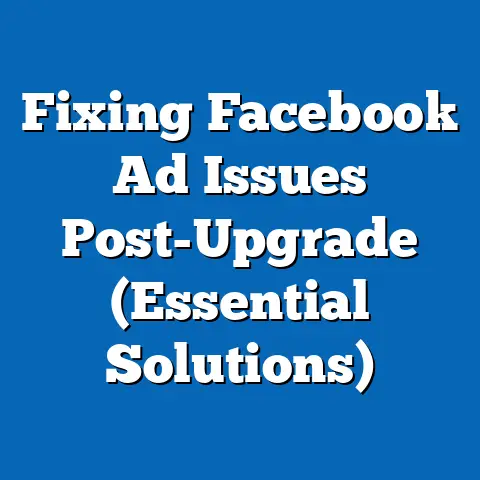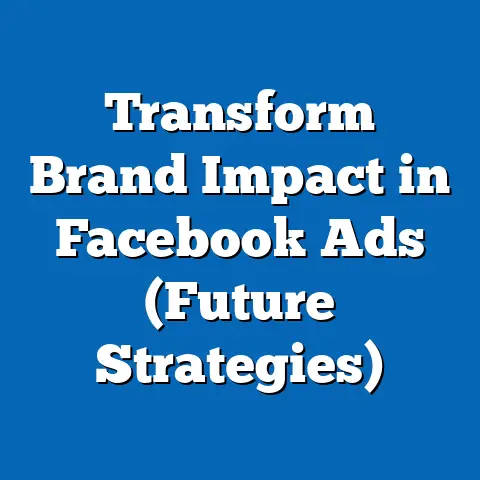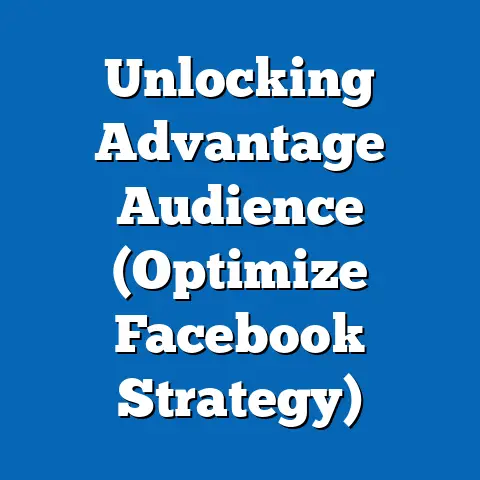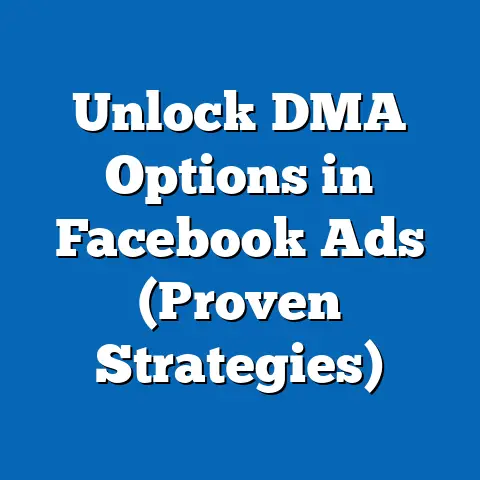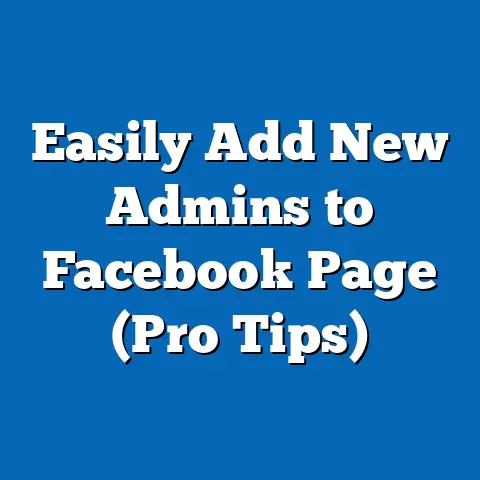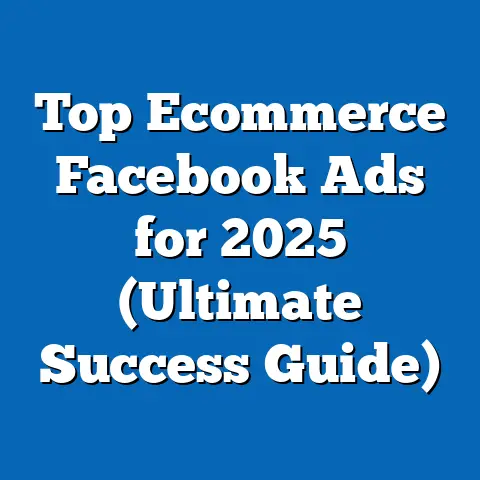Unlock Advertising in Facebook Groups (Expert Techniques)
Have you ever felt like your Facebook ads are just disappearing into the abyss of the newsfeed? Spending money, seeing impressions, but not quite getting the return you hoped for? I know I have. In fact, I remember launching a campaign a few years back for a local bakery, targeting users interested in “desserts” and “local restaurants.” The budget was decent, the creatives looked mouthwatering, but the results were… lukewarm at best. It felt like shouting into a crowded room and hoping someone would hear my specific message.
Then, I stumbled upon a Facebook Group dedicated to local food enthusiasts. Members shared their favorite spots, recipes, and restaurant reviews. An idea sparked: What if, instead of broadcasting to a general audience, I could connect with a hyper-targeted group of passionate foodies?
As of 2023, there are over 1.8 billion active Facebook Groups, each a unique ecosystem of shared interests and passionate communities. These groups are often overlooked by marketers, despite their incredible potential for engagement and conversion. What if the secret to unlocking your next big advertising breakthrough lies within the very communities you’re already a part of? Let’s dive in and explore the untapped potential of Facebook Groups for advertising.
The Power of Facebook Groups
Facebook Groups are more than just online forums; they’re digital communities built on shared interests, hobbies, or even geographic locations. This inherent sense of belonging and shared identity creates a unique environment where trust and engagement thrive.
Think about it: people join Facebook Groups because they want to connect with others who share their passions. They’re actively seeking information, advice, and recommendations. This makes them a highly receptive audience for relevant and authentic advertising.
I’ve seen firsthand how powerful this can be. Remember that bakery campaign I mentioned earlier? After my initial struggles, I started engaging in that local foodie group. I didn’t immediately start blasting ads. Instead, I shared photos of the bakery’s new pastries, asked for feedback on potential menu items, and even offered exclusive discounts to group members. The response was incredible. People were genuinely interested, asking questions, and sharing their experiences. The conversion rate from that group alone far surpassed the results of my initial, broader ad campaign.
Data backs this up. Studies have shown that ads within Facebook Groups often experience higher click-through rates (CTR) and lower cost-per-acquisition (CPA) compared to traditional Facebook ads. This is because the audience is pre-qualified by their group membership, leading to a more targeted and engaged audience.
Real-life Example: A fitness apparel brand targeted a Facebook Group dedicated to marathon runners. Instead of running generic ads, they sponsored a training guide specific to the group’s needs and offered exclusive discounts on running gear. The campaign resulted in a 30% increase in sales and a significant boost in brand awareness within the running community.
The unique characteristics of Facebook Groups – niche audiences, built-in trust, and high engagement – make them a goldmine for savvy marketers.
Key Takeaway: Facebook Groups offer a highly targeted and engaged audience, leading to potentially higher conversion rates and lower advertising costs.
Identifying the Right Groups for Your Brand
Finding the right Facebook Groups for your brand is crucial for successful advertising. It’s not about joining every group remotely related to your industry; it’s about identifying the communities where your target audience actively participates and where your brand can genuinely contribute value.
Here’s my step-by-step approach to finding the right groups:
- Facebook Search: Start with the basics. Use Facebook’s search bar to look for groups related to your product, service, or industry. Be specific with your keywords. Instead of “marketing,” try “small business marketing tips” or “digital marketing for startups.”
- Analyze Group Engagement: Don’t just join the first group you find. Take a close look at the group’s activity. Are members actively posting and commenting? Are the discussions relevant to your target audience? A dead group with few interactions won’t be of much use.
- Third-Party Tools (Optional): Several third-party tools can help you discover and analyze Facebook Groups. These tools often provide insights into group demographics, engagement rates, and trending topics. While they can be helpful, they’re not essential. Good old-fashioned research can be just as effective.
- Competitor Analysis: See which groups your competitors are active in. This can provide valuable clues about potential target audiences and relevant communities.
- Understand Group Rules: Every Facebook Group has its own set of rules and guidelines. Before you even think about advertising, familiarize yourself with these rules. Some groups prohibit self-promotion altogether, while others have specific guidelines for advertising.
- Join and Observe: Once you’ve identified a few promising groups, join them and observe the dynamics. Pay attention to the types of content that resonate with members, the tone of the discussions, and the overall culture of the group.
I remember joining a group for “DIY home renovation” when I was working with a local hardware store. I spent the first few weeks simply observing the conversations, learning about the members’ pain points, and identifying opportunities to offer helpful advice.
Building Rapport: Before you start advertising, focus on building rapport with group members. Participate in discussions, answer questions, and offer valuable insights. This will help you establish credibility and position yourself as a trusted member of the community.
Key Takeaway: Thorough research, analysis of group engagement, and understanding of group rules are essential for identifying the right Facebook Groups for your brand. Focus on building rapport before you start advertising.
Crafting Compelling Content for Group Advertising
Advertising in Facebook Groups requires a different approach than traditional Facebook ads. You can’t just blast generic ads and expect to see results. Group members are looking for authentic, valuable content that resonates with their specific interests.
Here are some expert techniques for crafting compelling content for group advertising:
- Tailor Your Content: Generic content is a death sentence in Facebook Groups. Always tailor your content to the specific interests and needs of the group’s members.
- Tell a Story: Storytelling is a powerful way to connect with your audience on an emotional level. Share personal experiences, customer success stories, or even humorous anecdotes that relate to the group’s interests.
- Leverage User-Generated Content (UGC): Encourage group members to share their experiences with your product or service. UGC is incredibly powerful because it’s authentic and relatable.
- Incorporate Visuals: High-quality images and videos are essential for capturing attention and conveying your message effectively. Use visuals that are relevant to the group’s interests and that showcase your product or service in an appealing way.
- Be Authentic: Authenticity is key to building trust and credibility in Facebook Groups. Be transparent about your brand’s values, and don’t try to be something you’re not.
- Offer Value: Always provide value to the group’s members. This could be in the form of helpful tips, exclusive discounts, or even just entertaining content.
- Ask Questions: Asking questions is a great way to spark discussions and engage with group members. This also helps you understand their needs and interests better.
- Post Formats:
- Polls: Create engaging polls related to the group’s interests and your product or service.
- Questions: Ask open-ended questions to spark discussions and gather valuable feedback.
- Informative Articles: Share informative articles that provide valuable insights and advice.
- Polls: Create engaging polls related to the group’s interests and your product or service.
- Questions: Ask open-ended questions to spark discussions and gather valuable feedback.
- Informative Articles: Share informative articles that provide valuable insights and advice.
I once worked with a travel agency that targeted a Facebook Group for “Budget Backpackers.” Instead of running generic ads for vacation packages, they shared blog posts about “How to Travel the World on $50 a Day” and “The Best Hostels in Southeast Asia.” These articles provided valuable information that resonated with the group’s members, and they naturally led to inquiries about the agency’s services.
Key Takeaway: Tailor your content to the specific interests of the group, tell a story, leverage UGC, incorporate visuals, be authentic, and always offer value.
Engaging with Group Members
Creating compelling content is only half the battle. To truly succeed in Facebook Groups, you need to actively engage with group members. This means more than just posting content; it means participating in discussions, answering questions, and building relationships.
Here are some strategies for fostering engagement within Facebook Groups:
- Respond to Comments: When someone comments on your post, take the time to respond. Acknowledge their feedback, answer their questions, and show them that you’re listening.
- Participate in Discussions: Don’t just post your own content; also participate in discussions initiated by other members. Share your expertise, offer helpful advice, and contribute to the overall conversation.
- Host Live Q&A Sessions: Hosting live Q&A sessions is a great way to connect with group members in real-time. Answer their questions, address their concerns, and provide valuable insights.
- Run Contests and Giveaways: Running contests and giveaways is a fun way to generate excitement and engagement within the group. Offer prizes that are relevant to the group’s interests and that align with your brand.
- Be a Valuable Resource: Position yourself as a valuable resource for group members. Share your expertise, offer helpful advice, and be willing to go the extra mile to help them.
I remember working with a software company that targeted a Facebook Group for “Small Business Owners.” Instead of just promoting their software, they started offering free workshops on topics like “How to Automate Your Marketing” and “How to Improve Your Customer Service.” These workshops were incredibly popular, and they helped the company establish itself as a trusted resource for small business owners.
Building Relationships: Building relationships with group members is crucial for long-term success. The more people trust you, the more likely they are to buy from you.
Key Takeaway: Actively engage with group members by responding to comments, participating in discussions, hosting live Q&A sessions, running contests, and being a valuable resource. Focus on building relationships and trust.
Measuring Success and Adjusting Your Strategy
Like any marketing effort, advertising in Facebook Groups requires careful tracking and analysis. You need to know what’s working and what’s not so you can refine your strategy and improve your results.
Here are some key performance indicators (KPIs) to track when advertising in Facebook Groups:
- Post Reach: How many people saw your post? This is a basic metric that gives you an idea of your overall exposure.
- Comment Engagement: How many people commented on your post? This is a good indicator of how engaging your content is.
- Reaction Engagement: How many people reacted (liked, loved, etc.) to your post? This is another indicator of engagement.
- Click-Through Rate (CTR): What percentage of people who saw your post clicked on the link? This is a good indicator of how relevant your content is to the group’s members.
- Conversion Rate: What percentage of people who clicked on the link actually converted (e.g., made a purchase, signed up for a newsletter)? This is the ultimate measure of your advertising effectiveness.
- Cost-Per-Acquisition (CPA): How much did it cost you to acquire a new customer through your Facebook Group advertising? This is a key metric for measuring your ROI.
Analyzing the Data: Once you’ve gathered enough data, it’s time to analyze it and identify areas for improvement. Are certain types of content performing better than others? Are certain groups more responsive to your advertising?
Refining Your Strategy: Based on your analysis, adjust your strategy accordingly. Experiment with different types of content, target different groups, and refine your messaging.
Continuous Improvement: The key to success with Facebook Group advertising is continuous improvement. Always be learning from your interactions within the group and refining your strategy based on the data you gather.
I once ran a campaign for a local bookstore in a Facebook Group for “Book Lovers.” After analyzing the data, I discovered that posts featuring author interviews and book recommendations performed significantly better than posts promoting sales and discounts. I adjusted my strategy accordingly, and the bookstore saw a significant increase in sales.
Key Takeaway: Track your KPIs, analyze the data, refine your strategy, and adopt a mindset of continuous improvement.
Conclusion – Call to Action
Facebook Groups represent an untapped goldmine for advertisers willing to think outside the box and engage with their target audience on a deeper level. By understanding the unique dynamics of these communities, crafting compelling content, and actively engaging with group members, you can unlock a powerful new advertising strategy.
Don’t just take my word for it. I challenge you to take immediate action.
- Identify Relevant Groups: Search for Facebook Groups related to your product or service.
- Join and Observe: Join a few promising groups and observe the dynamics.
- Craft Compelling Content: Create content that is tailored to the group’s interests and that provides value to its members.
- Engage with Members: Participate in discussions, answer questions, and build relationships.
- Track Your Results: Track your KPIs and refine your strategy accordingly.
The key to unlocking a powerful advertising strategy may just be a group conversation away. So, go out there, join the conversation, and start connecting with your target audience on a deeper level. You might be surprised at the results. I know I was. And that bakery? Well, it’s now a local favorite, thanks in part to the power of Facebook Groups.

